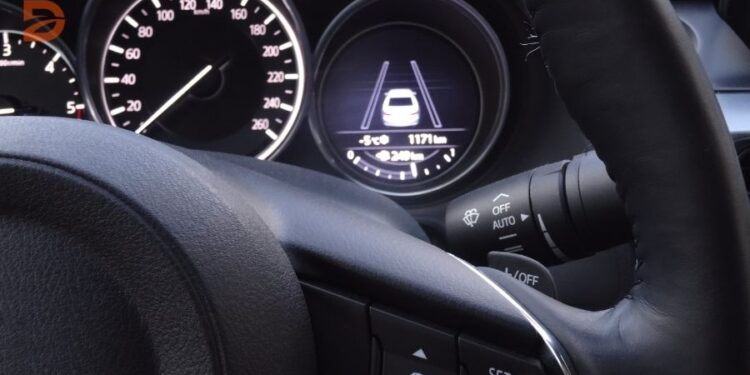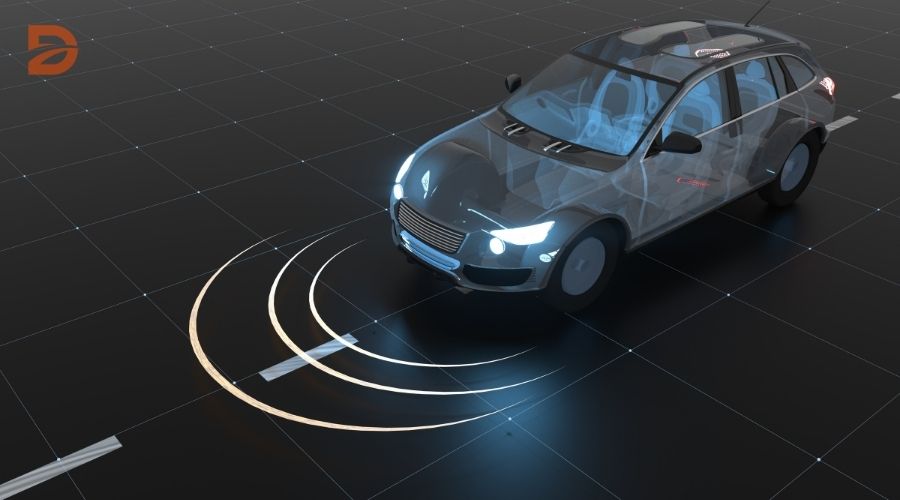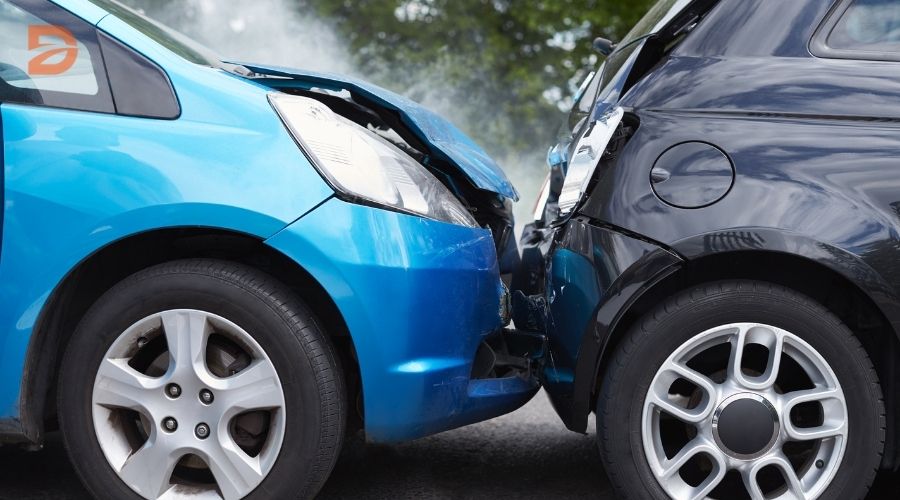Are your vehicles equipped with the latest collision avoidance technology? This innovative suite of advanced safety features could be the key to keeping your fleet and the roads around them safer. With the National Transportation Safety Board (NTSB) advocating for more safety systems on vehicles for over 25 years, it’s time to explore how collision avoidance systems can benefit your business and your drivers.
In 2019, there were approximately 500,000 large truck accidents in the US. Collision avoidance technology can help prevent and mitigate these accidents, making roads safer for everyone. Investing in this technology offers clear benefits for fleet managers, including reduced repair costs and insurance premiums. This article will explore the key components of collision avoidance systems, how they work, and the potential impact on crash prevention and fleet safety.
Key Takeaways
- Collision avoidance systems can reduce accidents with injuries by up to 56% when combined with forward collision warnings and automatic braking.
- NTSB has advocated for more safety systems in vehicles for over 25 years, highlighting the importance of this technology.
- Higher vehicle prices due to advanced safety features are offset by the potential for reduced repair costs and insurance premiums.
- Collision avoidance systems are designed to enhance and assist drivers, not replace the need for attentiveness and care on the road.
- Fully self-driving cars are still years away, emphasizing the ongoing responsibility of human drivers to stay vigilant and engaged.
What is Collision Avoidance Technology?
Collision avoidance technology is a vital component of Advanced Driver Assistance Systems (ADAS), which use sensors, cameras, and other advanced technologies to monitor the road and assist drivers. Collision avoidance systems, in particular, are designed to detect potential crashes and alert drivers to take action, helping to prevent accidents and enhance overall road safety.
Understanding Driver Safety Technology Terms
The key collision avoidance technologies include forward collision warning, which warns the driver of obstacles ahead, and automatic emergency braking, which can apply the brakes automatically to prevent a collision. These systems rely on a variety of sensors, such as radar, cameras, and lasers, to constantly monitor the vehicle’s surroundings.
How Collision Avoidance Systems Work
When a collision avoidance system detects a potential crash, it will alert the driver through visual, audible, or haptic (vibration) warnings. In some cases, the system can also take immediate action by applying the brakes automatically to prevent or mitigate the impact of the collision. This advanced technology helps drivers respond quickly and effectively to potential hazards, reducing the risk of accidents and improving overall road safety.
“Collision avoidance systems can help prevent minor accidents, such as fender benders and sideswipes, which can accumulate costs for fleets over time.”
According to a study by the Insurance Institute for Highway Safety, combining forward collision warning systems with autonomous emergency braking systems could reduce rear-end collisions by up to 50% and rear-end collisions with injuries by up to 56%. This highlights the significant potential of collision avoidance technology to improve driver safety and prevent countless accidents on the road.
Key Components of Collision Avoidance Systems
Collision avoidance systems are designed to help drivers stay safe on the road by leveraging a range of advanced technologies. These systems include both driver alert and driver assistance features that work together to prevent or mitigate accidents.
Driver Alert Technology
Collision avoidance systems utilize various sensors to detect potential hazards, such as other vehicles, pedestrians, and lane markings. These sensors provide the system with crucial data, which is then used to alert the driver of potential dangers. Common driver alert features include:
- Blind Spot Warning: Alerts the driver to vehicles in their blind spots, reducing the risk of sideswiping incidents.
- Cross Traffic Warning: Warns the driver of oncoming traffic when backing out of a parking spot or driveway.
- Forward Collision Warning: Identifies potential frontal collisions and prompts the driver to take action.
- Lane Departure Warning: Notifies the driver if the vehicle is drifting out of its lane, helping to prevent sideswipe and head-on collisions.
- Pedestrian Detection: Identifies pedestrians in the vehicle’s path and alerts the driver, particularly valuable in urban environments.
Driver Assistance Technology
In addition to providing alerts, collision avoidance systems can also intervene to help the driver avoid or mitigate a collision. These driver assistance features include:
- Adaptive Cruise Control: Maintains a safe following distance from the vehicle ahead, automatically adjusting speed as needed.
- Automatic Emergency Braking: Applies the brakes automatically if a collision is detected and the driver does not respond in time.
- Electronic Stability Control: Helps maintain control of the vehicle by detecting and correcting for loss of traction or skidding.
- Parking Assist: Provides guidance and control to help the driver maneuver the vehicle into tight parking spaces.
- Rear Automatic Emergency Braking: Detects obstacles behind the vehicle and applies the brakes to prevent or minimize rear-end collisions.
These advanced technologies work together to enhance driver awareness and provide valuable assistance, contributing to a safer driving experience for all.
Collision Avoidance, Advanced Safety Tech in Action
As the National Highway Traffic Safety Administration (NHTSA) continues to research and evaluate the performance of collision avoidance systems, the impact of these advanced safety technologies is becoming increasingly clear. From forward collision alert and lane departure warnings to blind spot monitoring, the NHTSA’s efforts are shedding light on the potential of these systems to prevent accidents and save lives.
NHTSA’s analysis has shown that automatic emergency braking (AEB) systems can prevent an estimated 28,000 collisions and 12,000 injuries per year. Similarly, electronic stability control (ESC) systems implemented for large trucks and buses are estimated to save 49 lives annually and prevent up to 1,759 crashes, providing an economic benefit of over $300 million.
The benefits of these collision avoidance systems extend beyond just the individuals involved in crashes. Work-related vehicle collisions in the U.S. cost employers $25 billion, with an average cost of $671,000 per death and $65,000 for a non-fatal injury reported in 2013. By reducing the frequency and severity of these incidents, collision avoidance technologies can have a significant impact on the financial burden faced by businesses and employers.
| Collision Avoidance Technology | Potential Benefits |
|---|---|
| Forward Collision Alert | Warns drivers of potential collisions with vehicles or pedestrians ahead, allowing them to take evasive action. |
| Lane Departure Warning | Monitors lane markings and alerts drivers when the vehicle is drifting out of its lane, preventing side-swipe and head-on collisions. |
| Blind Spot Monitoring | Detects vehicles in the driver’s blind spot and provides alerts, helping to avoid crashes during lane changes and merging. |
As the adoption of these advanced safety technologies continues to grow, the impact on road safety is expected to be significant. With the NHTSA’s guidance and the industry’s commitment to innovation, collision avoidance systems are poised to play a crucial role in reducing the number of motor vehicle crashes and saving thousands of lives each year.
Benefits of Collision Avoidance Systems
Collision avoidance systems have emerged as a crucial technology in enhancing road safety and preventing devastating crashes. Studies have shown that these advanced systems can significantly reduce the risk of various types of crashes, from rear-end collisions to lane change incidents and pedestrian accidents.
Potential for Crash Prevention and Mitigation
Data from the Insurance Institute for Highway Safety (IIHS) indicates that forward collision warning and automatic emergency braking systems can prevent more than 40% of rear-end crashes involving semi-trucks. Additionally, blind spot monitoring has been shown to reduce the rate of lane-change crashes by 14%. These technologies can also play a pivotal role in preventing and mitigating pedestrian crashes, a growing concern on our roads.
Insurer Benefits and Future IoT Integration
Collision avoidance systems offer significant benefits to fleet owners and insurers as well. Insurers recognize the safety advantages of these technologies and are often willing to offer discounts to fleets that implement them. Looking ahead, the integration of collision avoidance systems with IoT (Internet of Things) and intelligent transportation systems has the potential to further enhance road safety through better communication and coordination between vehicles, infrastructure, and other road users.
As the technology continues to evolve and become more widespread, the impact of collision avoidance systems on crash prevention and mitigation will only grow, leading to safer roads and reduced costs for businesses and insurers alike.
Conclusion
Collision avoidance systems have emerged as a crucial component of advanced safety technology in modern vehicles, offering significant benefits for fleet safety and accident prevention. By understanding the intricate workings of these systems, their key features, and the potential impact on crash mitigation, fleet managers can make informed decisions to enhance the safety of their operations and protect their drivers.
As these innovative technologies continue to evolve, integrating collision avoidance systems will become essential for fleets seeking to improve road safety and reduce the costs associated with accidents. The statistics highlight the impressive potential of these systems in reducing the frequency and severity of crashes, ultimately leading to enhanced fleet efficiency, lower insurance premiums, and a safer driving environment for all road users.
Moving forward, the continued advancement and widespread adoption of collision avoidance systems will play a pivotal role in achieving the common goal of safer roads and reduced traffic-related fatalities. By embracing these cutting-edge safety technologies, fleet operators can prioritize the well-being of their drivers, contribute to public safety, and position their businesses for long-term success in an increasingly competitive industry.
FAQ
What is collision avoidance technology?
Collision avoidance technology is part of Advanced Driver Assistance Systems (ADAS) that use sensors, cameras, and other technologies to monitor the road and assist drivers. These systems detect potential crashes and alert drivers to take action, or can automatically apply the brakes to prevent or mitigate a collision.
What are the key components of collision avoidance systems?
Collision avoidance systems include driver alert technologies like blind spot warning, cross traffic warning, forward collision warning, lane departure warning, and pedestrian detection. They also include driver assistance technologies like adaptive cruise control, automatic emergency braking, electronic stability control, parking assist, and rear automatic emergency braking.
How effective are collision avoidance systems at preventing crashes?
Studies have shown that collision avoidance systems can have a significant impact on crash prevention and mitigation. For example, forward collision warning and automatic emergency braking systems can prevent more than 40% of rear-end crashes involving semi-trucks, and blind spot monitoring has been shown to reduce the rate of lane-change crashes by 14%.
What are the benefits of implementing collision avoidance systems for fleets?
Implementing collision avoidance systems can lead to lower insurance rates for fleets, as insurers recognize the safety benefits of these technologies. Additionally, these systems can help prevent and mitigate accidents, reducing repair costs and improving overall fleet safety.
How are collision avoidance systems evolving with IoT and intelligent transportation systems?
The integration of collision avoidance systems with IoT (Internet of Things) and intelligent transportation systems has the potential to further enhance road safety through better communication and coordination between vehicles, infrastructure, and other road users.











